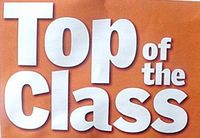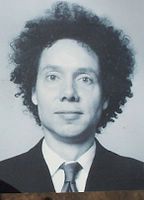
Turning on the brain - or turning it off?

The key to learning at any age is the presentation of a problem to solve. If the learners accept the challenge then learning is 'on'.
Seems simple enough so why don’t schools give up on their preplanned curriculums and base all learning on rich problems, or projects? Are they frightened their students won’t learn enough (they don’t now) ; or that they won’t be able to measure what it is they are supposed to learn ( today they measure only the obvious – important thing like the joy of learning are just too hard it seems); or they frightened of losing control ( imagine students following their own interests individually or in groups); or are they just too busy trying to cope with all the demands placed on them by those distant from the reality of their classrooms? The worst case scenario would be that they have given up thinking about such things and just want to get on with doing a bad job well!
And why is that, when this rich learning is seen, it is in the primary classrooms where student’s individuality and learning styles is valued? In the secondary schools learning has been fragmented into incomprehension by teachers whose own specialty has been created by this very fragmentation - making them blind to what is really required. Instead they blame their student’s behavior, culture, or anything but their own teaching, and the very schools they work in.
Until they give up on this 'deficit thinking' they will never solve their students growing disengagements, failure or alienation.
When they wake up from their industrial age nightmare the will see there are plenty of good ideas out there to introduce to 'turn' all their students 'on' again.
All of these ideas can loosely be lumped under what can be called ‘inquiry approaches’ – ‘action learning’,’ projects based learning’, whatever. And such teachers will see that schools are almost the last organization to make full use of them in an integrated way. Even two year olds use this approach!!
One approach I have discovered on the web is the ‘Critical Skills Programme’. This is a practical model to develop vitally important skills and dispositions that all learners require. The model originated in the USA in 1981 and is widely used in UK schools. Nothing in the model will surprise creative teachers.
The CPS experiential learning cycle is at the heart of a critical skills classroom which:
• Engages students in a collaborative complex problem solving situation that relates to the real world
• Promotes assessment for learning by encouraging students to reflect on their learning
• Caters for different Learning Styles and Multiple Intelligences.
• And promotes better understanding of content by enabling students to construct individual meaning from their experiences.
A key aspect is the design and use of challenges which are open ended problem solving activities which enable pupils to:
• Develop understanding through performance
• Demonstrate their skills and attitudes
• Attend to the processes of learning and social interaction
• See the ‘big picture’ that makes the work worth doing.
The programme was originally started by asking what skills and dispositions would be vitally important for students have by the time they leave school? Followed by what would a classroom look like that gave conscious and purposeful attention to these skills and dispositions?
I guess the questions could be based on the so called ‘new’ Key Competencies’ that our Ministry policy analysts have adapted from a recent OECD paper to replace their earlier failing standardized curriculums, but that is another story!
The CPS covers the role of the teacher as: a mediator, coach and supporter, and outlines how students would be expected to: work to actively solve problems, reflect on what they have learnt, use negotiated criteria, and display or demonstrate what they have learnt.
The programme also gives guidance about how to ‘cover’ specific learning targets that schools have to comply with.
The primary teaching approach is through thoughtfully designed and related ‘Challenges’. Developing such collaborative challenges is the key to the programme.
If applied across the school a collaborative learning community would be developed where students self esteem, motivation and engagement are maximized.
Now none of this would be surprising to most teachers of young students – but it would be an exciting challenge for those who teach the older students.
I guess people ‘out there’ might have similar models to share?

















